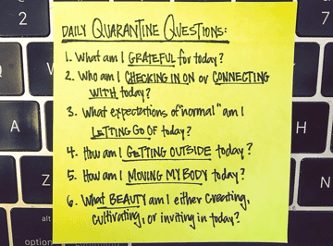DEAR TEACHERS
Written by Dana Fulwiler, Ever Active Schools
DEAR TEACHERS: WE SEE YOU. WE SUPPORT YOU. WE THANK YOU.
The world today looks very different than it did just a few short months ago. Our homes have transformed into workplaces, schools, and places of rest and healing. While we may all be riding out the same storm, we are not all in the same boat. We will all experience this time differently with a unique set of challenges and opportunities – and sometimes the latter may seem a bit fuzzy.
We’re kicking off a teacher well-being blog series with the opportunity to express gratitude to YOU – our educator heroes! The entire EAS team would like to give a huge shout out to each and every teacher and school leader – thank you for keeping hope and learning afloat during an unprecedented and challenging time in our global history. We appreciate you!
Creating this video became a positive intervention for me. Connecting with colleagues, curating the clips, finding the right poem to use, choosing the music, and especially bringing together our community to express the deep gratitude we always feel toward the educators we work with on a regular basis. While not the reason why any of us choose to engage in acts of kindness or gratitude, research tells us that there are reciprocal benefits to giving, to expressing thanks, and to connecting with others. Science can help explain why I was grinning ear to ear along the way!
THE SCIENCE OF GRATITUDE AND POSITIVE PSYCHOLOGY
Positive psychology is the scientific study of well-being and human strengths. The field has been driven by Dr. Martin Seligman, a clinical psychologist who mostly studied depression until he became President of the American Psychological Association (APA) in 1998. He advocated for psychology to be just as concerned with what goes right with us as it is with what goes wrong. Seligman proposed a positive psychology, a science of human strengths, in his Presidential address:
“Psychology is not merely a branch of the healthcare system. It is not just an extension of medicine. And it is surely more than a tenant farmer on the plantation of profit-motivated health schemes. Our mission is much larger. We have misplaced our original and greater mandate to make life better for all people – not just the mentally ill.” (p. 562)
Positive psychology takes a holistic approach to well-being, acknowledging challenges while empowering agency to live meaningful lives. It is not happy-ology. It studies our human capacity to thrive through positive traits, experiences, institutions, and resilience. Research now shows how identifying and cultivating strengths and resilience can lead to greater meaning, goal achievement, mental health, academic performance, productivity, life satisfaction, engagement – the list goes on. Since 1998 positive psychology has expanded to include positive neuroscience, psychotherapy, humanities, organizations, and education.
Gratitude was one of the earliest interventions that Seligman and others researched.
I had the honour of learning from Dr. Seligman in the Master of Applied Positive Psychology program at the University of Pennsylvania. Before the program started I was excitedly sharing the news of my acceptance with others, and reactions ranged from curiosity about an unknown field, to “we can’t solve the world’s problems with positivity”; “pretty fluffy stuff”; and “we need to be realistic”. I was intrigued by these perspectives, especially from people with psychology backgrounds, about a sub-field that seeks to proactively elevate psychological and subjective well-being. Obviously it’s important to think critically about approaches! Though, have we become so focused on fixing problems that we see building the good as “fluff”? Unrealistic? Frivolous? I bring it up here because “gratitude” itself seems to spark similar responses. What does it bring up for you?
Science suggests that expressing gratitude offers a host of well-being benefits for both the givers and the receivers. Relevant to coping with the pandemic, it can ignite a ripple effect of resilience resources to help us navigate adversity, increasing positive emotions, meaning, and appreciation for life. Gratitude is not about ignoring the bad, but capitalizing on the good when we can. As researchers Emmons and Shelton put it:
“Grateful individuals are not naively optimistic, nor are they under some illusion that suffering and pain are nonexistent. Rather, these persons have consciously taken control by choosing to extract benefits from adversity, with one of the major benefits being the perception of life as a gift.” (p. 468)
In a time loaded with uncertainty, gratitude is an actionable resource with positive effects:
✓ Sleep better
✓ Improve physical and mental well-being
✓ Reduce rumination and toxic emotions
✓ Strengthen relationships and spirituality
✓ Increase job satisfaction and productivity
Learn More: How Gratitude Changes You and Your Brain; The Ripple Effects of a Thank You; Health Benefits of Kindness; explore the Positive Psychology Center.
SAVOURING THE GOOD
Gratitude isn’t always easy. We are wired to notice and focus on the negative, which presents a unique challenge during COVID-19 when we’re experiencing heightened levels of uncertainty and negative news. While we may owe part of our survival as a species to this negativity bias, it can also get in the way of our resilience and well-being (especially right now!). Perhaps more than ever, it’s important for us to intentionally cultivate gratitude and positive moments, while also honouring the full range of our emotions, challenges, and opportunities.
Since emotions are contagious we can strive to be mindful about the ones we’re spreading. The great news? We can “catch” positive emotions just as easily as negative ones. This doesn’t mean we need to be happy and smiling all of the time! Compassion and generosity both generate and spread positive emotion. When we give to others, a note or gesture of gratitude for example, our brain’s pleasure and reward centres light up as if we were the recipient of the good deed, rather than the giver. Researchers call this the helper’s high. According to Dr. Aaron Beck, do-gooding and connection are the antidotes to negative thinking. They also have the added bonus of generating a ripple effect of well-being for those around us, and sparking engagement in social problems.
Capitalizing on positive moments ignites what Dr. Barbara Fredrickson calls the “broaden and build” effect of positive emotions. Experiencing positive emotions helps to broaden our perspectives, actions, and relationships, and build resources like social support and resilience. As we experience more positive emotions, this broadening and building continues in an upward spiral.
How can we infuse more positive emotions into our lives right now? Dr. Judith Beck reiterates that in order to notice positive moments and experience the resulting emotions, we need to think about them, see them, and remember them. One option is to try apps like Day One that make it easy to document and revisit daily positive moments. Another strategy is through positive news! John Krasinski started a YouTube channel devoted to sharing positive news during COVID-19: check out Some Good News (SGN) for a comical weekly dose of positive stories from around the world!
DAILY NUDGES
In times of uncertainty we can also strive to focus on that which we can control. How are you creating opportunities to notice and savour the good, while also honouring your own challenges, experiences, and emotional states during the pandemic? This is uncharted territory for us all. It might be helpful to build in daily prompts to nudge you into habits that are helping, rather than hindering your ability to be present and savour the juicy moments of goodness around you. In a Greater Good Science Center article photographer Brooke Anderson explains why and how the daily questions below have helped her (and others) navigate these challenging times. Gratitude is #1 on the list. I have found this list to be an empowering daily reminder to act on my own behalf! Especially when I catch myself glued to the news, or losing sight of what’s within my control. On my best days I strive to tackle all, on my hardest days I challenge myself to pick a few, or land somewhere in between. I would invite you to meet yourself where you are; no two days are the same. Which questions might be most beneficial for you today?
Stay tuned for upcoming blogs in this teacher and staff well-being series that build upon the above questions – enhancing meaningful connections, resilience, and leveraging strengths.
REFERENCES
- Seligman, M. E. P. (1999). The president’s address. American Psychologist, 54.
- Seligman, M. E. P., & Csikszentmihalyi, M. (2000). Positive psychology: An introduction. American Psychologist, 55(1), 5-14.
- Emmons, R. A., & McCullough, M. E. (2003). Counting blessings versus burdens: An experimental investigation of gratitude and subjective well-being in daily life. Journal of Personality and Social Psychology, 84(2), 377-389; Quote from – Snyder, C. R., & Lopez, S. J. (Eds.). (2001). Handbook of positive psychology. Oxford university press.
- Emmons & McCullough, 2003; Grant, A. M., & Gino, F. (2010). A little thanks goes a long way: Explaining why gratitude expressions motivate prosocial behavior. Journal of personality and social psychology, 98(6), 946; Seligman, M. E., Steen, T. A., Park, N., & Peterson, C. (2005). Positive psychology progress: empirical validation of interventions. American psychologist, 60(5), 410; Wood, A. M., Froh, J. J., & Geraghty, A. W. (2010). Gratitude and well-being: A review and theoretical integration. Clinical psychology review, (7), 890-905.
- Rozin, P., & Royzman, E. B. (2001). Negativity Bias, Negativity Dominance, and Contagion. Personality and Social Psychology Review, 5(4), 296–320; Vaish, A., Grossmann, T., & Woodward, A. (2008). Not all emotions are created equal: The negativity bias in social-emotional development. Psychological Bulletin, 134(3), 383-403.
- Fredrickson, B. L. (2001). The role of positive emotions in positive psychology: The broaden-and-build theory of positive emotions.American Psychologist, 56(3), 218-226.





Well said.
THANK YOU Ever Active Alberta for stepping up as teachers and amazing role models to to support teachers in Alberta and across Canada during this challenging time!
Great article! I needed to be reminded of how to stay grateful and focus on resilience during these strange time we find ourselves in. Those daily quarantine questions are going on my fridge!